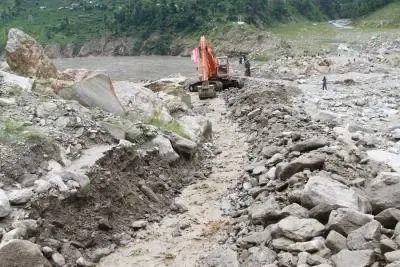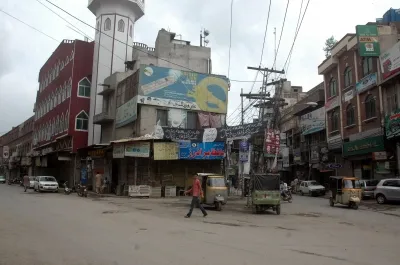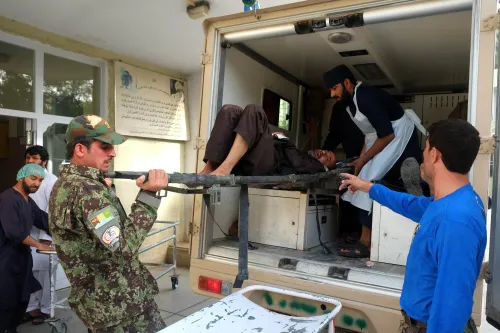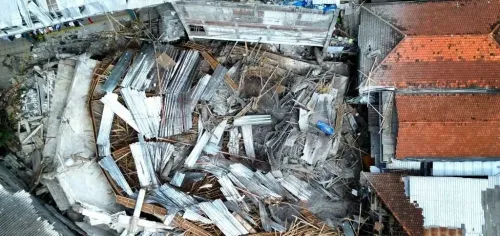What Caused the Tragic Loss of 52 Lives in Nepal's Climate Disasters?

Synopsis
Key Takeaways
- 52 fatalities reported due to natural disasters.
- Severe infrastructure damage from flooding and landslides.
- Ongoing efforts to assist affected families and restore basic services.
- Climate change poses a significant threat to Nepal's hydropower potential.
- Immediate action is necessary to address the impacts of climate change.
Kathmandu, Oct 5 (NationPress) Tragically, a minimum of 52 individuals have perished in natural disasters within the past three days in Nepal. This alarming situation has arisen due to relentless rainfall that has impacted most regions of the country since Friday, as reported by an official from the Armed Police Force (APF).
According to APF Spokesperson Director Inspector General Kalidas Dhaubaji, as of Sunday evening, the death toll stands at 52, with seven individuals reported missing and 27 others injured as a result of monsoon-related calamities across various regions.
In the eastern Ilam district, a staggering 38 fatalities were attributed to landslides, highlighting the severe impact of these weather events.
In addition to the tragic loss of life, Nepal has also endured significant infrastructure damage due to landslides and flooding throughout the nation.
The Independent Power Producers' Association of Nepal (IPPAN), representing private power developers, indicated that flooding and landslides have severely impacted 18 hydropower projects, including 13 that are operational and five under construction, disrupting power generation.
As a result, power generation from 13 projects, which collectively have a capacity of 105.4 MW, has been halted due to damage to related infrastructure, according to IPPAN.
Historically rich in hydropower potential, Nepal is increasingly facing threats to this crucial infrastructure due to climate change-related disasters in recent years.
The Ministry of Energy, Water Resources and Irrigation reported that riverbank erosion, flooding, and inundation occurred in various locations due to the recent heavy rainfall. This has led to the erosion of nearly 1,500 metres of riverbank embankments and an estimated preliminary loss of around Rs 100 million.
Furthermore, some irrigation projects have also been inundated due to flooding, as stated by the Ministry.
The Department of Hydrology and Meteorology noted that the water levels of several rivers, including the Bagmati, Trishuli, Eastern Rapti, Lalbakaiya, and Kamala, had exceeded alert levels due to prolonged rainfall, though they are now gradually subsiding.
Additionally, the water level in the Saptakoshi river surpassed danger levels until Sunday afternoon, and its tributaries—primarily the Tamor, Sunkoshi, and Arun rivers—also exceeded danger levels but are now on a downward trend.
The Koshi river, often referred to as the “Sorrow of Bihar”, remains a significant concern for India due to the flooding and inundation it causes in Bihar during monsoon seasons.
In response to this crisis, the Monsoon Response Command Post, an entity under the Ministry of Home Affairs, convened on Sunday to arrange immediate relief for the families of the deceased, continue rescue, relief, and rehabilitation efforts for those affected and displaced by monsoon-induced disasters, and to request concerned agencies to swiftly gather data on initial impacts and losses.
Additionally, the government body has sought local governments and relevant agencies to expedite relief distribution, relocation, and rehabilitation of affected families, instructing the responsible agency to repair and reopen obstructed roads, and take prompt actions to restore essential services like water supply, electricity, and communication.









